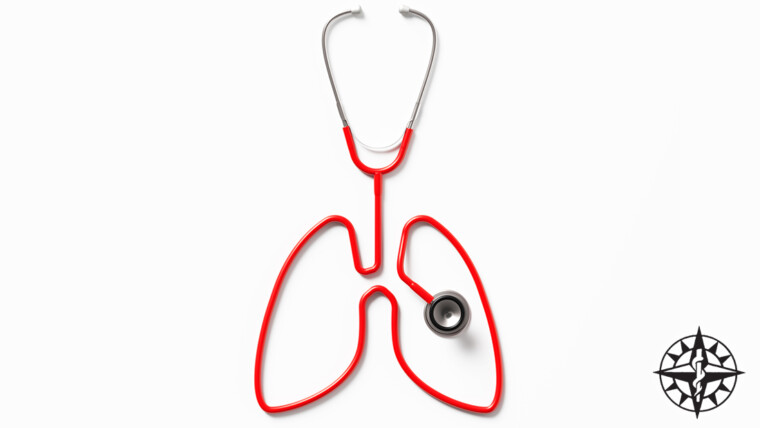Published on: December 7, 2022
While the world has been focused on the COVID-19 pandemic for the past two years, tuberculosis still remains one of the world’s deadliest infectious diseases (ECDC). Let’s learn more about tuberculosis and how you can stay up to date with cases in Florida!
As the world was reminded with COVID-19, airborne infectious diseases are extremely contagious and can be fatal to those who are immunocompromised. After surviving the height of the COVID-19 pandemic, it is important not to forget about the many other preexisting infectious diseases out there, like tuberculosis.
Tuberculosis (TB) is an infectious disease caused by a bacterium (mycobacterium tuberculosis) that is spread from person to person. Like COVID-19, tuberculosis spreads through the air from the germs of persons with TB. Tuberculosis is commonly recognized for its vicious attack on the lungs. A person can contract a TB infection by breathing in the air of someone with TB disease. This can be through coughing, sneezing, talking, or singing. When the bacteria are in the lungs, macrophages rush to the infection site to try to contain the bacteria. Typically, a healthy person can fight off the bacteria. If an individual is unable to, the bacteria can reproduce within the lungs and eventually spread throughout the body.
Tuberculosis (TB) is the second most deadly disease in the world killing 20 million people since 2000. In Florida alone last year, there were 500 reported cases of tuberculosis. This disease has not slowed down and will continue to spread without proper education and safety measures. By understanding the complexity of TB and its origin, the public can stay educated on how to prevent its spread in their community. Let IDATB help inform you of everything you need to know about tuberculosis in Florida.
Brief History
Tuberculosis (TB) is an infectious disease that has been around throughout history and into the present day. Since ancient times, tuberculosis has plagued the earth. From humans to animals, TB bacteria have been discovered in archaeological remains dating back to 4000 B.C. As time progressed, tuberculosis began to spread in outbreaks throughout civilizations. During the 1600- 1800s, tuberculosis caused 25% of all deaths in Europe and later in the United States. Many would try to treat TB with sunlight and milk transfusions, but these were found to be ineffective treatments. Since there was no vaccine or effective treatment available, a TB diagnosis was viewed as a death sentence.
Later in the 19th century, Robert Koch was the first to identify the bacteria that cause tuberculosis. This helped open up the door for French scientists to finally develop the effective Bacillus Calmette-Guérin (BCG) vaccine in 1921. Since then, the BCG vaccine is the only TB vaccine that has prevented countless deaths related to TB in the past hundred years.
If you want to learn more about the disturbing history of tuberculosis, check out this YouTube video linked below!
Difference Between TB Infection and TB Disease
Tuberculosis is more common than people think. About 90% of infected people don’t show symptoms making it difficult to diagnose. Luckily, most tuberculosis infections are not active. The infection will remain latent, or inactive, if the immune system can continue to fight off the bacteria. Unlike a TB disease, TB infection is not contagious and has no symptoms. Therefore, most people with TB infection have no idea.
If the immune system becomes weakened, TB infection can become active leading to TB disease. Instead of having the macrophages rush to the infection site to contain the bacteria, the bacteria multiply within the lungs. A weakened immune system and increasing number of bacteria, allow TB to cause lung disease and can even spread throughout the body. As a result, many will become sick and contagious to others.
If you would like to know more about the differences between TB infection and TB disease, check out the YouTube video below.
Symptoms
To reiterate what was stated above, there are no symptoms of a TB infection. As for TB disease, symptoms will vary depending on where the tuberculosis is in the body. In most cases, TB will begin in the lungs and can eventually spread to the kidneys, spine, and brain. Since the bacteria is active and spreading throughout the body, TB symptoms can be fast-growing in a brief period of time. Let’s look at some of the top symptoms to keep an eye out for with tuberculosis.
- Prolonged cough (longer than 3 weeks)
- Coughing up blood
- Chest pain
- Loss of appetite/weight loss
- Fever
- Night Sweats
By identifying symptoms early, you will be able to protect yourself and others around you in the long run. For more information on the complex symptoms of tuberculosis, watch the YouTube video below.
Treatment
While there is the BCG vaccine, this vaccine is only administered or required in countries that are experiencing high rates of TB. Since the vaccine has shown to have a potential interference with tuberculin skin test reactivity, the BCG vaccine is not recommended or required in the U.S. Instead, physicians treat tuberculosis with a specifically curated regime of antibiotics.
- For those who have a latent TB infection, antibiotic treatment is taken for 3 to 9 months to prevent future active disease.
- As for active TB disease, antibiotic treatment takes 6 to 12 months.
Tuberculosis is completely curable if you catch it early and follow a consistent antibiotic treatment.
High Risk People
While anybody can contract tuberculosis, there are some groups that are more susceptible to infection than others.
- People living with HIV/AIDS are 18 times more likely to develop TB disease.
- Those who live in a country where TB is common. According to the WHO, 95% of cases and deaths are in developing countries.
- Those who travel to a country where TB is common.
- People who are malnourished.
- Alcohol use disorder
- Smoking tobacco
- Health care workers
- Diabetics
As a reminder, just because you may fall in any of these categories does not mean you have tuberculosis.
Tuberculosis in Florida
In response to the Division of Tuberculosis Elimination plan to eliminate tuberculosis from the United States by 2025, Florida has administered a statewide TB program in support of the Florida System of Tuberculosis Care. This program not only aims to reduce the spread of TB but to provide services and educational information for those with active TB disease. From providing testing centers to the proper TB training in the Florida healthcare industry, the Florida System of Tuberculosis Care has provided our community with the essential resources to help combat this infectious disease.
Since the original initiative to eliminate tuberculosis, case numbers have dropped in recent years. From 2002 to 2021, tuberculosis cases in Florida have gone from 1,086 cases to 500 cases. Just in Hillsborough and Pinellas county alone, counties had a combined 80 tuberculosis cases in the Tampa Bay area last year. This number is projected to continue to decrease if people stay educated, get tested, and follow the right precautions.
Additional Resources
- History of BCG Vaccine – PMC (nih.gov)
- Fact Sheets | General | Tuberculosis: General Information | TB | CDC
- Tuberculosis (who.int)
- Tuberculosis (TB) Center | Florida Department of Health in Hillsborough (floridahealth.gov)
- Tuberculosis (TB) | Florida Department of Health in Pinellas (floridahealth.gov)
- Tuberculosis (who.int)
- Covid-19 Has Made Tuberculosis Even More Of A Forgotten Pandemic (forbes.com)
About IDATB
At Infectious Disease Associates of Tampa Bay (IDATB), we specialize in providing high-quality healthcare services for patients in the Tampa Bay metro area. We understand the importance of maintaining and improving the overall health of our patients.
Our comfortable, state-of-the-art clinic can provide you and your loved ones with the top care you require. If you or someone who lives with you would like to be evaluated for infectious disease, then IDATB is here to help. With over 30 years of experience, IDATB specializes in treating Floridians with infectious diseases while providing an in-house lab for any necessary testing. If you have any questions or concerns about infectious diseases, call IDATB at 813-251-8444.





